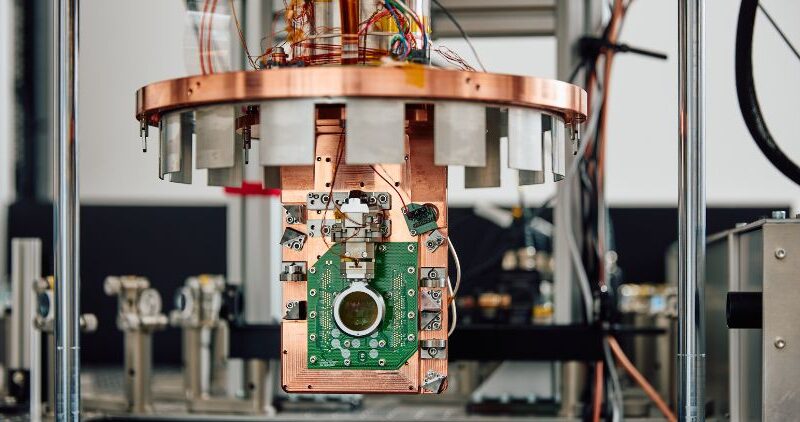Oxford Ionics has closed a £30 million Series A funding round. The round was led by Oxford Science Enterprises and Braavos Investment Advisors, and was joined by Lansdowne Partners, Prosus Ventures and Torch Partners. Investors also included big names from the sector like Niels Nielson, co-founder of 2xN, and Hermann Hauser, the founder of ARM.
Cited in the 2022 Nobel Prize for Physics award, Oxford Ionics’ work has broken world records for performance. The round, which brings the total raised by Oxford Ionics to £37 million, will be used to expand their team and build on their success.
Oxford Ionics was founded by Dr Chris Ballance and Dr Tom Harty, who met at Oxford as undergraduates and returned there to complete their PhDs in quantum computing. Ballance joined TFN to tell us about the company, quantum computing, and what it could mean for tech and the world.
The challenges of quantum computing
Quantum computing is frequently suggested as the future of computing, but few understand the immense difficulties it involves. The approach uses quantum bits, or qubits, as an equivalent to the traditional binary bit. “Quantum computers are the most powerful form of computer that the laws of nature allow,” Ballance told us. Their power is such that problems that would take a classical supercomputer thousands of years to solve can be addressed by a quantum computer in seconds.
However, quantum computing is incredibly hard. “The most significant limiting factor for all quantum computing approaches is the error rate,” Ballance said. Ironically for computing at quantum scale, one approach echoes the early days of computing when a machine would fill a large room. “Some, like IBM and Google, accept high error rates and so build enormous warehouse size computers of millions of qubits which must be chilled to within one-millionth of a degree above absolute zero.”
Oxford Ionics is pioneering the use of trapped ions, which have the lower error rates of any approach to quantum computing, and has developed electronic control technology that enables scaling, and the possibility of chips that operate at normal room temperature. They have even proven the potential of production line manufacture in partnership with Infineon Technologies. Investor Niels Nielson notes the potential of the company “bringing the power and potential of trapped ion qubits and integrating it into classical semiconductor processes.”
Oxford Ionics may have started with the research of Ballance and Harty but has grown significantly since then. They have worked together for 12 years, but in the last few years have grown Oxford Ionics ten-fold to a team of 35 people. As might be expected for something as complex as quantum computing, it is a diverse and multinational team. The employees represent 10 different nationalities, and a quarter are female or non-binary. Perhaps the one area where diversity may be lacking is academic qualifications, the team have 10 PhDs between them, a rate not often seen outside universities!
Beyond the next frontier in computing
Quantum computing is still in its infancy. One challenge that Ballance recognises is the error rate. “The next really significant breakthrough will be when someone shows quantum computers with error rates low enough to solve meaningful problems without the need for error correction,” he said. Oxford Ionics’ latest funding will help with this work. With plans to use the investment to expand their team and help bring its technology to market, Ballance suggests we “watch this space!”
However, Ballance won’t make any predictions on what quantum computing might bring, but does discuss the sort of difference it might make. “In the past we have had to explore applications by mathematical proofs on a chalk-board,” he says. However, the dynamics have changed, “we can now develop quantum software like we can normal software – hack and try things out!”
He suggests the analogy of the effect that super-computers had on engineering. “Today we can use super-computers to model aerodynamics,” he explains. “But before supercomputers this was unimaginable because even though the equations were well understood and easily written down, the computation was unimaginably complex.”
A modern comparison might be pharmacology, where currently development is through experimentation and trial and error. “Quantum computers could model the molecular interactions,” he suggests, “so we could design the drugs right the first time.”
But although he is avoiding predictions, Ballance is confident of the transformational power of quantum computing. “The one bet we can confidently make is that when we look back in 5 years’ time, the killer apps are going to be developed in this discovery phase,” he told us. “Up to now, we have not had quantum computers that solve problems we can’t solve any other way – now we do!















